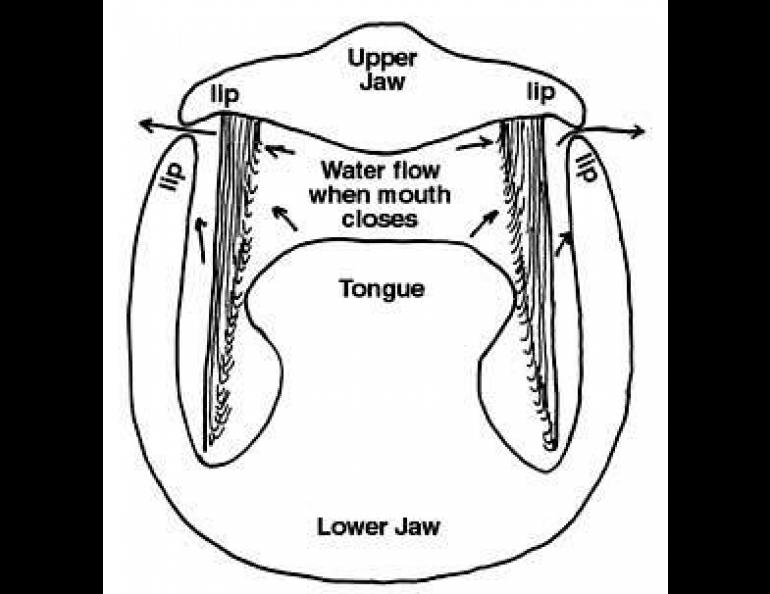
Baleen
The 600 or so plates of baleen carried in the upper jaw of a bowhead whale were so valuable during the heyday of whaling that the take from a single whale could pay the expenses of an entire voyage, leaving all else for profit. The long, tough fibers forming the baleen plates were so strong that they were used for many applications now taken over by fiberglass or plastics. Had radially wound auto tires been invented a hundred years earlier, the best of them would have been called "baleen-belted radials."
Baleen plates ranging in length up to ten feet are attached by one end to the upper jaw so that they hang down on either side of the whale's massive tongue. The plates are set side-by-side crossways in the jaw with the frayed-out hairy bristles toward the inside of the mouth, next to the tongue.
To feed, the baleen whale swims with open mouth through swarms of small creatures known as water fleas or schools of somewhat larger shrimp-like crustacea--the small creatures baleen whale eat are collectively called krill. When the mouth is closed, the tongue moves upward toward the roof of the mouth and forces the collected water sideways out between the baleen plates. The soft hairy fibers on the inner edges of the plates form a heavy, brush-like mat which effectively stops the krill and holds it inside the mouth. The krill is then swallowed into the whale's stomach where several tons can be retained at one time.





